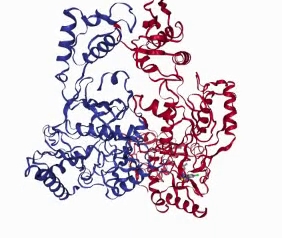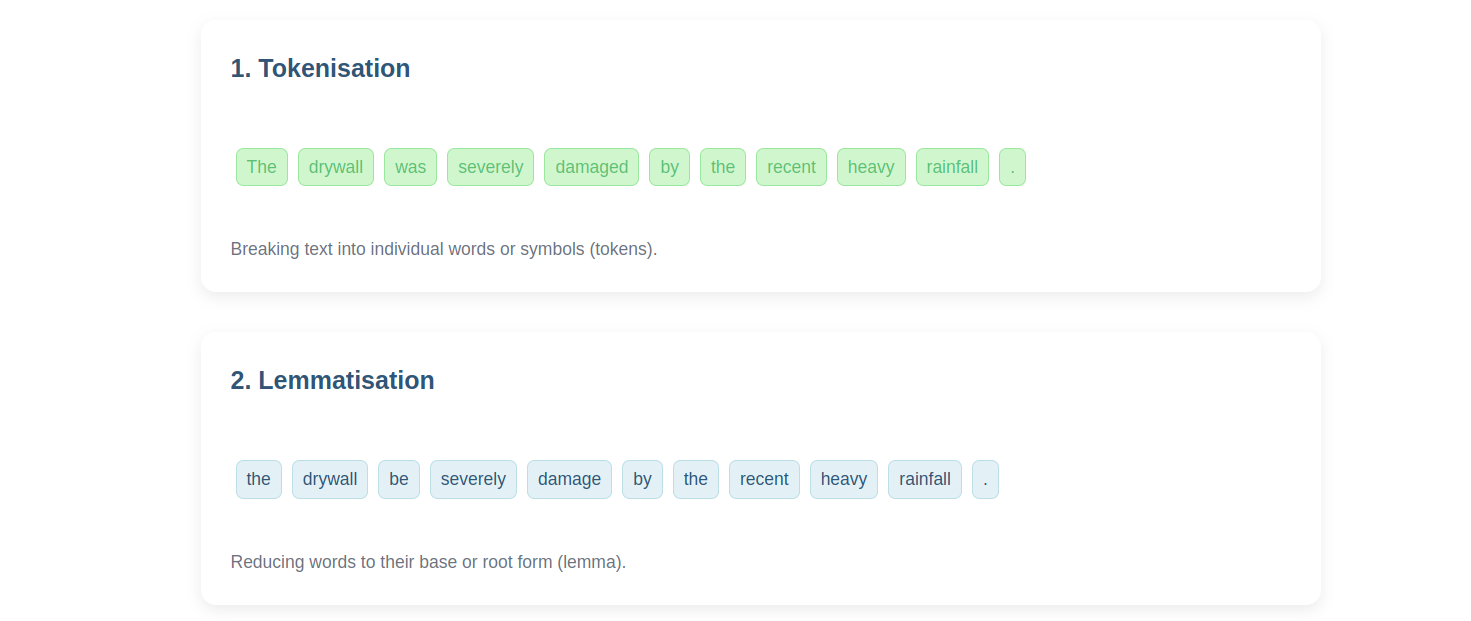
How AI and machine learning are transforming healthcare.
The use of Artificial Intelligence (AI) in the healthcare field is already expanding monumentally, showing its application in many subsets and providing benefits to companies, physicians, and patients alike. Not only does AI use in the healthcare field allow for a transformation in patient care, but it also helps the provider, payer, and pharmaceutical companies increase organisation and productivity.
An emerging subdivision of AI that is especially appealing to the healthcare sector is natural language processing (NLP), which gives computers the ability to understand text and spoken words, and respond in the same way.
NLP within healthcare primarily involves understanding, creating, and classifying clinical documentation. Some examples of this include understanding clinical notes on patients (even if unstructured) and transcribing patient interactions. These actions help speed along the healthcare process, resulting in a quicker visit for the patient and the ability for a physician to see more patients. NLP extends beyond these means, though, and within the healthcare field is also the ability for NLP to prepare reports, such as those on radiology examinations.
Patient engagement and adherence are typically viewed as one of the biggest hurdles in providing quality care for the patient. This is because the best physicians can do their all to care for a patient, but if their guidelines are not followed, or the patient does not care for their body as they should, the work completed at the clinic or office is retroacted and essentially worthless.
Multiple studies have proven that the greater role a patient plays in their healthcare, the better the outcome they see.
Noncompliance, or the lack of following doctor’s orders, is a significant problem in the healthcare field. This involves any patient that does not adhere to the course of treatment, including losing weight, scheduling follow-up visits, or taking prescriptions as indicated.
A survey of more than 300 healthcare executives and clinical leaders examined this noncompliance issue, and more than 70% of the survey responders reported high patient engagement in less than 50% of patients.
AI has addressed this gap in care needs by encouraging better patient compliance. Applications such as messaging alerts and providing content that encourages actions at home are showing promise in improving patient compliance.
One application of this involves the increasing use by the general public of devices such as smartphones, watches, and biosensors. These devices allow for a more comprehensive overview of their health for the doctor while also providing the patient the ability to actively monitor their health and play a more central role in their care.
AI has also been implemented in these devices to provide reminders, such as taking medication or reaching a “step goal.”
Additional programming can take the information provided by these devices to tailor care recommendations, which are then shared with providers, patients, nurses, or care delivery coordinators.
AI and machine learning in healthcare play a significant role in diagnosing diseases, with one of its most recent advances involving the detection of cancer via feature extraction from radiology images.
Not only does this allow for disease detection when it otherwise would have gone unnoticed, but this ability to diagnose diseases earlier means that more patients can start treatment sooner, which can lead to greater positive outcomes across the board.
Certain advances in AI even consider patient information and diagnostic test results and compare this to other patients stored in the database to determine an ideal treatment that will provide the most favourable outcome. This saves patients from the sometimes-extensive process of trial and error and instead allows them to start with the treatment most likely to be a success.
The healthcare industry requires an immense reliance on administrative activities to ensure that the clinic and patient care progress as needed. It comes as no surprise that AI has been introduced for administrative needs in the healthcare sector due to its use in all administrative tasks, but that does not make its impact any less beneficial.
For example, a 2018 study found that the average nurse spends 10% of their work time on administrative and regulatory activities. Finding a way to automate these tasks through AI allows nurses to spend more time caring for patients, providing better care and patient satisfaction.
Fast Data Science - London
Some of the administrative activities which can be managed by AI include clinical documentation, claims processing, medical records management, and revenue cycle management.
Machine learning also serves the added benefits of identifying incorrect claims, which can save health insurers, providers, and governments money, time, and effort, a benefit that cannot be passed over.
From patient care to drug creation, the applications of AI to the healthcare field, and the resultant benefits, are immense.
One of the most common forms of AI is machine learning, which is a statistical method used to fit models to data and “learn” based on the training models and how they fit to the data.
One application of machine learning within healthcare is precision medicine, which predicts the treatment protocols likely to succeed based on the patient’s health factors and treatment context. Using a data set full of past patients, including their personal qualities, treatments, and success, machine learning can determine the best treatment option and how successful it is expected to be.
Deep learning is increasingly applied to radiomics, which involves detecting clinically relevant features in an image. Utilizing deep learning allows for the detection of features that are otherwise undetected by the human eye, resulting in the recognition of potentially cancerous lesions captured on radiology images.
Machine learning is popular in diagnosing diseases due to its ability to use a training group to “learn” how to diagnose diseases based on the true result. This means that the more diagnostic tests the machine runs, the more accurate it is.

Some of the critical roles of AI within the manufacturing process include reducing material waste, performing quality control, shortening design time, and performing predictive maintenance. This is accomplished due to the AI machine’s ability to perform tasks precisely and locate areas where the process can be streamlined.
AI is also a key component of many drug discovery trials. In particular, it helps with targeted therapy, including multi-target drug discoveries and biomarker identification. Identifying these biomarkers before the trial allows the research team to identify potential responders to a targeted therapy before testing on humans. It can accomplish this by using biomarker models “trained” with large datasets.
These abilities allow drug creators to more easily see connections within large volumes of data and decrease the amount of time a drug needs until it can get approval and go to market.
As discussed previously, patient compliance is one of the biggest hurdles in providing optimal healthcare, and this is especially detrimental during a clinical trial. For the trial to be accurate, the participants must take the drug when required, and forgetting a dose can dramatically impact results. Remote monitoring and algorithms to evaluate test results can help identify the participants who did not adhere to the drug administration schedule and remove their data from the study.

The protein structure of Reverse Transcriptase. AlphaFold is able to correctly calculate complex folding structures such as this.
One of the most considerable recent breakthroughs involving AI and biotechnology involves the AI system AlphaFold, developed by Google’s DeepMind. This system accurately predicted the structure of hundreds of thousands of proteins.
The impact of this system cannot be understated; previously, determining the structure of a protein entailed a series of time-consuming and expensive tests. In comparison, this AI development provides a considerable time and money saver within the biotechnology field while also extending the library of protein structures available in the public domain from 180,000 to 350,000.
This information will save researchers extensive time and money, allowing them to use this information in furthering their research.
While robots have long been introduced to the healthcare field, particularly with increased control and precision in surgery, they still rely primarily on a surgeon’s decisions. However, advances provide robots with AI capabilities that may eventually equip them with the same decision-making strategies (and ability to perform surgery) as the surgeons themselves.
With AI’s ability to weigh all treatment options and choose what would be more effective for the patient based on prior recordings, it is easy to see how the ability for robots to analyse and make a decision based on what is occurring would be beneficial in the surgical field.
Machine learning can be used to learn from the past to predict future patient or healthcare provider outcomes. Fast Data Science worked on a project in 2020 applying machine learning to doctors’ career paths for the UK’s National Health Service. The NHS has a large number of doctors on a training path to qualify as consultants (radiologist, cardiologist, etc), and wanted to identify the causes of the dropouts.
We took the payroll data over a period of several years and fed it into a machine learning model, which was able to learn key features and predict the likelihood that a particular doctor would leave the career path before completion. Similar models have been used to give a statistical or numeric basis to patient diagnoses, or to predict key metrics such as ER waiting room times.
Natural Language Processing is our focus area at Fast Data Science. We have worked on a number of projects involving using Natural Language Processing to predict the cost and risk of clinical trials. When a pharma company runs a clinical trial, they prepare a 200-page long PDF called a protocol. It is a laborious task to read through the protocol and produce a cost and risk assessment of the trial before it takes place. We have been working on a number of web-based tools which allow a specialist to upload the PDF protocol into a web UI and view a summary of key metrics such as risk level and cost, identified from the document content in plain English. For example, this project for Boehringer Ingelheim.
As AI, machine learning, and NLP continue to advance, they will see continued implementation in the healthcare field. There are still considerable hurdles to cross, the most significant of which is patient data safety, but addressing these concerns will then open the healthcare field to a tremendous increase in caring capability.
The ability of AI to assist with everything from the everyday administrative tasks to the diagnosis process, makes it clear that AI will not be leaving the healthcare field anytime soon. With each new cancer identified early thanks to the feature identification abilities of AI or each drug discovery that offers a new form of treatment, AI’s place in healthcare and the benefits it can provide providers, insurers, and patients alike, are further cemented. With the immense benefits and applications of AI seen each year, it is exciting to see what advancement will take place next.
Sarasohn-Kahn, J. (2013). A Role for Patients. American Journal Of Preventive Medicine, 44(1), S16-S18. doi: 10.1016/j.amepre.2012.09.019
IBM Cloud Education (2020). What is Natural Language Processing?.
Davenport, T., & Kalakota, R. (2019). The potential for artificial intelligence in healthcare. Future Healthcare Journal, 6(2), 94-98. doi: 10.7861/futurehosp.6-2-94
Davenport, Using AI to Improve Electronic Health Records. (2018).
Po-Yin Yen, J. (2018). Nurses’ Time Allocation and Multitasking of Nursing Activities: A Time Motion Study. AMIA Annual Symposium Proceedings, 2018, 1137.
Johnson, K., Wei, W., Weeraratne, D., Frisse, M., Misulis, K., & Rhee, K. et al. (2020). Precision Medicine, AI, and the Future of Personalized Health Care. Clinical And Translational Science, 14(1), 86-93. doi: 10.1111/cts.12884
N. J. Shafana and A. SenthilSelvi, (2021). Analysis of AI based Brain Tumor Detection and Diagnosis. 2021 4th International Conference on Computing and Communications Technologies (ICCCT). doi: 10.1109/ICCCT53315.2021.9711914.
Mann, M., Kumar, C., Zeng, W., & Strauss, M. (2021). Artificial intelligence for proteomics and biomarker discovery. Cell Systems, 12(8), 759-770. doi: 10.1016/j.cels.2021.06.006
Jumper, J., Evans, R., Pritzel, A., Green, T., Figurnov, M., & Ronneberger, O. et al. (2021). Highly accurate protein structure prediction with AlphaFold. Nature, 596(7873), 583-589. doi: 10.1038/s41586-021-03819-2
Looking for experts in Natural Language Processing? Post your job openings with us and find your ideal candidate today!
Post a Job
Guest post by Alex Nikic In the past few years, Generative AI technology has advanced rapidly, and businesses are increasingly adopting it for a variety of tasks. While GenAI excels at tasks such as document summarisation, question answering, and content generation, it lacks the ability to provide reliable forecasts for future events. GenAI models are not designed for forecasting, and along with the tendancy to hallucinate information, the output of these models should not be trusted when planning key business decisions. For more details, a previous article on our blog explores in-depth the trade-offs of GenAI vs Traditional Machine Learning approaches.

After this ruling, will tech companies move all model training to data centres that they consider “copyright safe”? Will we see a new equivalent of a “tax haven” for training AI models on copyrighted content? An “AI haven”? This article is not legal advice.

This new video explains natural language processing: what it is, how it works, and what can it do for your organisation. Natural Language Processing (NLP) is a branch of Artificial Intelligence (AI) that focuses on giving computers the ability to understand human language, combining disciplines like linguistics, computer science, and engineering.
What we can do for you